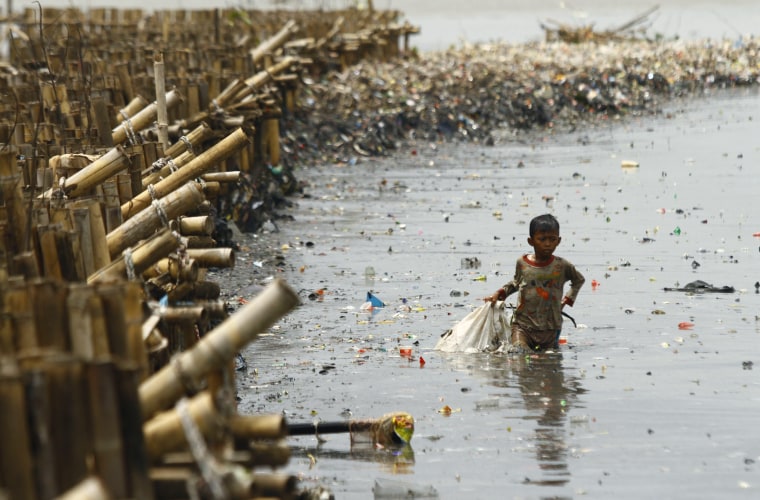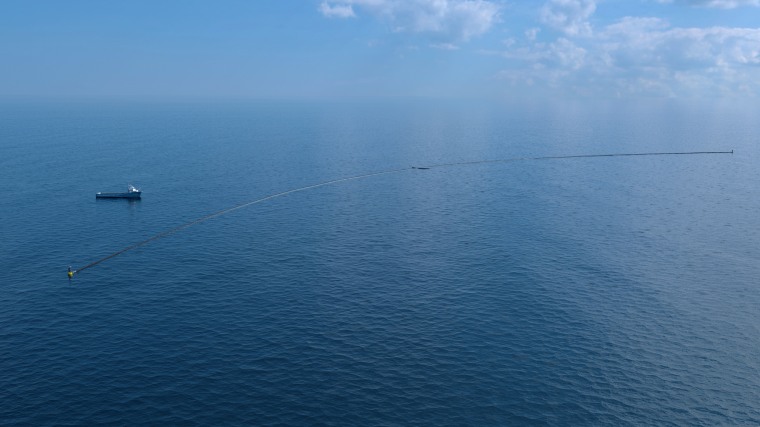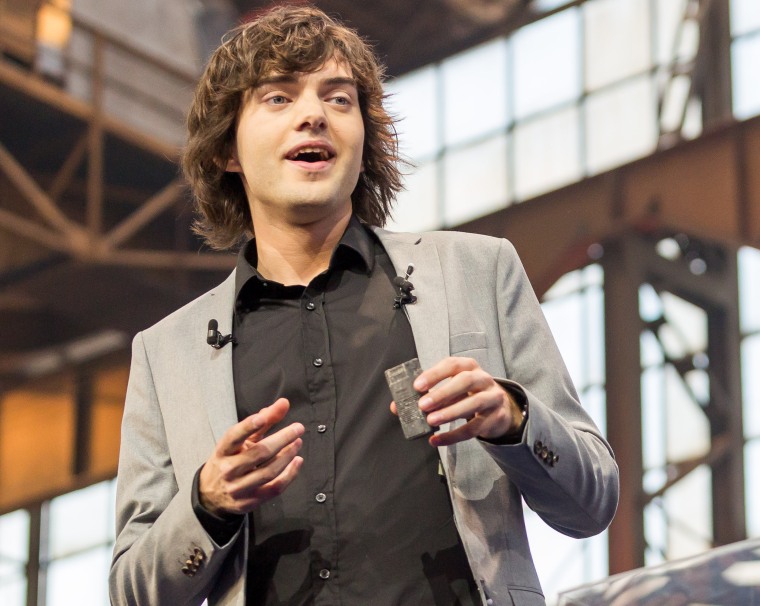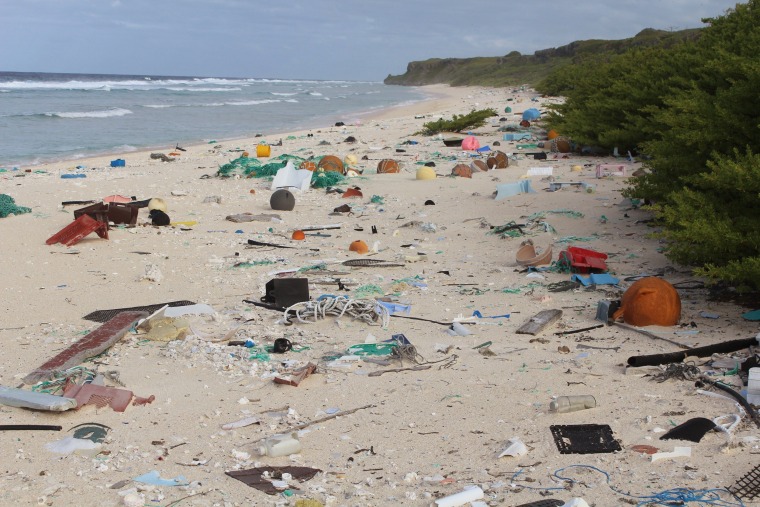Henderson Island — an uninhabited atoll in the South Pacific, halfway between New Zealand and Chile — should be one of the most pristine places on Earth. It’s about as isolated as an island can be. But today, the UNESCO World Heritage site’s white sand beaches are coated in 38 million pieces of plastic that have bobbed across the world’s oceans — giving it the planet's highest density of anthropogenic debris and proving that the oceans are truly awash with garbage.
The garbage isn’t just an eyesore. Scientists worry it could harm marine life and even humans. Not only do animals get tangled in fishing lines and other large debris, but they ingest smaller bits of plastic as well, which then release toxic chemicals, like mercury. Predators absorb the chemicals consumed by their prey, allowing those chemicals to move up the food chain until they reach you and me. Garbage in the oceans could truly wreak havoc on your health.
But there’s a ray of hope. One ambitious foundation, which raised $31.5 million in donations in a matter of years, will attempt to clean up plastic trash in the North Pacific as early as 2018. Hundreds of other projects are attacking the problem across the world. Experts agree that it will take an army to clean up the plastic junk, but they are hopeful it will be done.
Drowning in Plastic
We currently live in what some scientists call the Age of Plastic. Long clear sheets of plastic are wrapped around food in your fridge. We drink out of plastic and carry our groceries in plastic. It's probably covering the screen you’re reading this story on. It has blanketed the Earth — so much so that scientists think there will be visible layers of plastic in Earth's sediment millions of years from now.

About 8 million metric tons of plastic enter the ocean each year — enough to fill five plastic grocery bags for every foot of coastline in the world. The problem is so bad it’s impossible to find a pristine beach or region in the ocean, says Erik van Sebille, an oceanographer at Utrecht University in the Netherlands.
“Whenever we go out somewhere to measure plastic, we are almost sure to find it,” he says.
But the problem isn't as obvious as you think. Thanks to the ocean’s currents, a significant portion of trash ends up in huge systems of rotating currents called gyres, or simply “garbage patches.” There are five main garbage patches — one each in the Indian Ocean, the North Atlantic, the North Pacific, the South Atlantic, and the South Pacific.
Related: Scientists Have Wild Ideas for Getting Rid of Space Junk
Although garbage patches have captured people’s attention, Nancy Wallace, director of the marine debris program at the National Oceanic and Atmospheric Administration, says they aren’t easy to spot.
“You can sail through these ‘garbage patches’ and you wouldn’t even know you’re in it sometimes,” she says. “Because a lot of the time the plastic, or the debris, is so small, that you wouldn't see it. It’s also distributed throughout the water column or it’s on the bottom.”
Although the garbage patches don’t resemble Henderson Island, they’re still chock-full of rubbish. “We have to be absolutely ashamed as a society that we have been so careless with our waste and our plastic,” van Sebille says.
A Fools Errand?
The garbage certainly haunted Boyan Slat — a young Dutch inventor who noticed the problem while diving off the coast of Greece in 2011. “I came across more plastic bags than fish,” he says. “And I then asked myself the question, ‘Well why don’t we clean this up?’”
At the time, Slat was only 16 and it took a few years until he decided that he could be a part of that “we.” He dropped out of college and founded The Ocean Cleanup foundation with the hope of cleaning the Great Pacific Garbage Patch.
The essential idea behind Ocean Cleanup is to use the same currents that created the garbage patch and let them push plastic into a curved network of large floating barriers. The trash would the ultimately be funneled toward a central tank where it can be collected once a month. Slat plans to deploy the project next year and thinks that the North Pacific will be garbage-free by the 2040s.
But Ocean Cleanup has been hit hard with criticism as large parts of the scientific community think it will be ineffective. “They are going at the problem from the wrong side,” van Sebille says. It makes no sense to clean up the garbage at the end of its journey, he adds, not when you can stop it earlier and prevent it from interacting with marine life.

Wallace thinks cleanup projects should target trash before it becomes a problem. “We want to focus on preventing new sources of debris rather than trying to do the open ocean cleanup because it's just more challenging,” she says. She quotes another marine biologist who “once said, 'If your bathroom is flooding because the sink is pouring out water, you don’t start mopping up the water, you turn off the faucet,’” she says. “That's a great way to look at it. We can't just keep pouring more and more in and hope that we can mop it up. We have to turn that faucet off.”
Slat, however, thinks scientists need to attack the problem from both ends — prevent garbage from ending up in the oceans, and clean up what's collecting in garbage patches.

“In a way, cleanup is prevention,” Slat says. “Because if the oceans will be polluted forever, if we have to forget what's already in there and the best thing we can do is not make it worse, I think that will be a very uninspiring message … So now that we've shown that there is a path in which we can make the ocean clean again, I think that will actually help to motivate people to work on that prevention side as well.”
Turning Toward the Future
But prevention will be a chore. “The really scary statistic is that in the five years we will be producing as much plastic as in all of the 20th century,” van Sebille says. “If you don't plug the holes, if you don't stop the wave getting into the ocean, the amounts we're seeing now are minuscule compared to what's coming. So we need to act fast.”
Change has already begun. A law enacted in 2015 prohibited those tiny plastic beads found in facial scrubs and body washes. Designed to exfoliate your skin, the beads easily slip through sewage treatment plants and are carried into rivers, lakes, and oceans. The law came shortly after a study estimated that 800 trillion beads were washed down the drains daily.
"We can't just keep pouring more and more in and hope that we can mop it up. We have to turn that faucet off.”
But it’s unlikely that we’re going to stop using plastic entirely. And van Sebille doesn’t think we have to. In fact, he says it promising that the use of plastic doesn't always come hand-in-hand with litter.
“I am hopeful that it's not like carbon dioxide, where the carbon dioxide that we emit is an inherent part of the burning of fossil fuels,” he says. “Here, the use of plastics doesn't mean it has to end up in the ocean.”
Instead of halting the production of plastic, experts argue we need to target areas where the problem is easiest to tackle. And that varies throughout the world. Take the U.S. and China. Although America generates nearly twice as much waste per person per day as China does, China tops the list of plastic polluters. That’s because the U.S. has the proper infrastructure to get rid of waste, whereas in rural China, it's rare to have a system for trash collection.
Related: What Lies Ahead for Earth's Shifting Continents?
Many projects in China are trying to develop the proper infrastructure from the ground up.
“You have to look at the local challenges and culture and then develop the solutions around that and make the economic incentives work in each place,” Wallace says.
You have to look at where plastic causes the most harm, van Sebille argues. Out in the north Pacific, trash does little harm because there’s little marine life. But closer to the coasts, where animals live, trash can cause an array of dangers. Many scientists argue this is the best place to clean up.
Plenty of other cleanup projects target the coasts. Van Sebille points toward hundreds of small community groups that clean up their local beaches. Some U.S. cities have deployed trash collection boats into rivers that scoop up plastic before it can reach the ocean.

At the end of the day, every project counts.
“We’re seeing real investment from other countries that were not involved in the issue before,” Wallace says. Take Indonesia. Those volcanic islands are the second largest contributor to ocean garbage after China. Now, the country has started pilot projects that will help develop the infrastructure necessary to clean up trash.
“We need it all because we are facing this tsunami of new plastic,” van Sebille says. And although that might seem like a colossal problem, many experts are optimistic.
“We caused the problem," she says. "Therefore, we can solve the problem."
